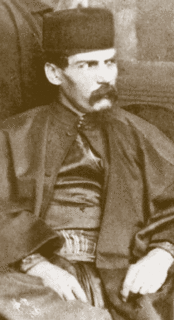 I discovered Steve and I share a fascination with Sir Richard Burton (1821-1890) when he put Burton on a list of "Good Things from Britain #5" in solidarity with the UK after the 7/7 terror bombings. Those of you who are not familiar with the life of this explorer, linguist, soldier, diplomat, travel writer, anthropologist, archaeologist, Orientalist, master swordsman, poet, raconteur, etc. will find a short bio and some other interesting things at this site. Another entertaining access to Burton is the 1990 movie Mountains of the Moon which is authentic to the spirit (if not every fact) of his explorations in search of the source of the Nile.
I discovered Steve and I share a fascination with Sir Richard Burton (1821-1890) when he put Burton on a list of "Good Things from Britain #5" in solidarity with the UK after the 7/7 terror bombings. Those of you who are not familiar with the life of this explorer, linguist, soldier, diplomat, travel writer, anthropologist, archaeologist, Orientalist, master swordsman, poet, raconteur, etc. will find a short bio and some other interesting things at this site. Another entertaining access to Burton is the 1990 movie Mountains of the Moon which is authentic to the spirit (if not every fact) of his explorations in search of the source of the Nile.I have a very firm memory of a chance encounter I had at age 15 in the Frayser Branch of the Memphis Public Library with The Devil Drives, Fawn Brodie's estimable biography of Burton. The dust jacket bears the famous Leighton portrait of Burton showing the great scar on his cheek where the Somali spear went in. I picked up the book and have been enthralled ever since.
I have collected books by and about Burton for many years and they are often hard to come by. My primary purpose in putting up this post was to let fellow Burton-lovers know that The Narrative Press has put out a number of his travel writings in handsome trade paperback editions. I bought Goa, and the Blue Mountains from them recently.
It was to my great delight that I actually got to use one of my Burton books as a reference on a cultural resources project I managed years ago. Burton is best known for his explorations in Africa, India, and the Middle East. He only made one foray into America and his account of it, The City of the Saints centers around a trip he took to Salt Lake City in 1860. My project was a pipeline in Wyoming that went between the towns of Evanston and Casper. Its right of way cut a significant historical resource, the Oregon Trail, in several places. The Trail and its landmarks are still highly visible in Southwestern Wyoming.
Burton took a stagecoach on the Oregon Trail route to reach Salt Lake City. His account of that journey is perhaps the best contemporary description of the Trail. In his thorough way (which drove his readers nuts) he gave verbal descriptions of each stop, used a sextant to plot their locations, gave the distance and time it took to travel between each stop, what he ate, and on and on. Burton tells us, if you want to emigrate from Independence, MO to Oregon, what type of wagon to buy, its price, what type of draft animals to use, a list of supplies to take, their quantities, price, and unit of measure. All information hard to find anywhere else.
I'll ad a final sidebar to this story. I had to coordinate my evaluations of the effect of the pipeline on the Oregon Trail with a BLM historian. Her name was Kathy O'Neal. She was new on the job and very competent, practical and professional. She met and eventually married an archaeologist pal of mine, Mike Gear. After a few years, they left cultural resources work and decided to write some books of their own.
No comments:
Post a Comment